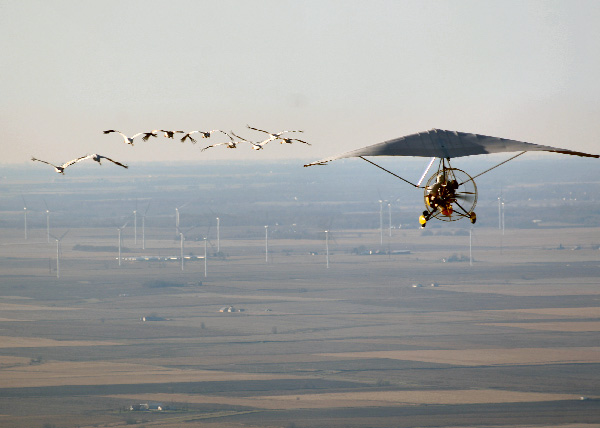Wind,
Wind, and More Wind (+0
Miles)
November 4, 2010: Migration Day 26
 |
Photo:
Operation Migration This photo is not from today, but from the 2008 migration. What do you see on the ground that shows WIND is a big player in this landscape? |
Liz sends today's no-fly verdict from the camp: "The nice cold temperature and the wind direction are positives. The wind strength is the party pooper: 10 mph on the ground and 30-35 mph aloft." Today will be down-day #3 in Livingston County, IL for the Eastern flock's Class of 2010. Increasing winds are forecast all morning. But keep reading!
Extraordinary Comeback for the Western Flock
Meanwhile,
thrilling news comes from the central flyway: Record numbers of
wild Whooping cranes
will complete
migration
to Texas
over the
next few
weeks! As many as 290
cranes are expected from their nesting grounds in Canada.
This extraordinary comeback is just two years after the deadliest winter
on record for this critically
endangered species. How did they do it? The cranes had plenty of water
in Canada's Wood Buffalo National Park, where they breed. Luckily,
the Texas drought has ended. The cranes should find what they need
for survival on the wintering grounds at Aransas NWR. “If
you want Whooping cranes to do well, just add water,” said
Tom Stehn,
Whooping crane coordinator for the U.S. Fish and Wildlife Service
(USFWS). Go cranes!
|
|
In the Classroom: Journal or Discussion
|



